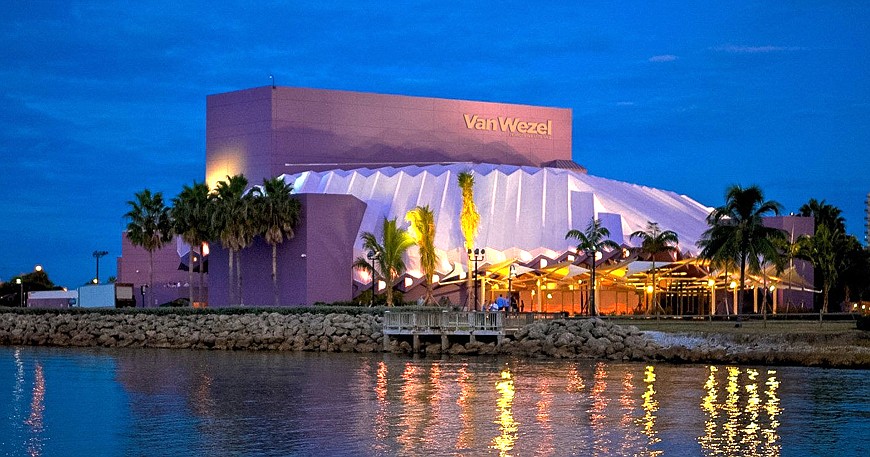- May 19, 2025
-
-
Loading

Loading

Wow. A lot of costly, concerning stuff is going on around here.
Three members of the Sarasota School Board think the district can build and run a police force while trying to operate a school system.
The city is facing the potential of paying a $49 million judgment for its behavior in a real estate deal. The saga of the most expensive lift station in history continues — it is estimated to cost $50 million when finished. Legal fees — at $600,000 so far, with $204,000 of them covering costs for the Lido Key Residents Association — continue to climb in the battle over Big Pass sand, while erosion continues on Lido Key. Apparently, no one has figured out how to keep the west side of Tamiami Trail from flooding next to the new Westin hotel.
And then there are all the big-money projects in the works:
Grand total estimate: $1 billion.
From where will all that money come?
The only one of these projects that has the financing and capital in place and available is the hospital. So make the wish list $770 million.
Of all these projects, the most concerning — for Sarasota city taxpayers, and perhaps Sarasota County taxpayers — are The Bay and its accompanying performing arts center(s). As a package, consider their costs to be at least $500 million.
No matter what or how you dream, if these projects are to go forward, there is no avoiding they are going to require local tax dollars. Unknown are the answers to these two important questions: How much in local tax dollars? And who will pay?
Like good consultants on these kinds of projects, The Bay’s consultants have offered the usual talking points on funding — a menu, including the standard public-private partnerships; private and corporate donors; corporate sponsors; tourist-development tax money; state and federal tax money; concession and parking fees; bond issues; tax-increment financing.
But let’s be honest. We’ve all been around long enough to know, and especially so in Sarasota, the likelihood of some benefactor stroking a $200 million to $250 million check to get his or her name on the entrance to the park or on the front door of a performing arts hall is a long, long shot.
Sure, the Ringling Museum has raised $92 million of $100 million. But it has had the benefit of being part of Florida State University’s $1 billion Raise the Torch campaign that started in 2012. There are far more big donors for those kinds of university endowment campaigns than there are for big city parks.
Fact is, the majority of the money for The Bay likely will have to come from local taxpayers. Oh, there will be the predictable fight between the city and county over how much can be tapped of the county’s tourist-development (bed) taxes. Just look to Orlando to see how that went when the city of Orlando fought for bed-tax money to fund the downtown Orlando Dr. Phillips Performing Arts Center.
Orange County eventually gave in, raising its bed tax from 5% to 6% (Sarasota County’s is 5%.). But even that subsidy from tourists, in the world tourist mecca of Orlando, wasn’t enough to provide the major funding source for the Dr. Phillips Center.
The largest portion of funding for the Dr. Phillips Center has come from city and county bond issues — pledging local taxpayers’ money to finance the long-term debt on a project that now has exceeded more than $500 million.
The Dr. Phillips Center, by the way, took 30 years to go from idea to a two-phase construction. The project came to a halt after phase one in 2014, when it fell $185 million short for phase two. Since 2012, private and corporate contributions have totaled $125 million. Still, although a city jewel, the Dr. Phillips Center for the Performing Arts remains a sticky, financial challenge for the city and county.
We’re not pointing out the travails of Orlando as discouragement, but rather, as reality. At this point in the bayfront planning process, it seems common sense that before there are more advances on master plans and what exactly would be constructed, The Bay’s committee and City and County Commissions would be making definitive decisions on financing: From where will the money come and who’s going to pay?
At the same time, and equally important, the City Commission needs to address governance: Who and how should manage and operate that 53 acres and the facilities on it?
We know this much: Having watched Sarasota city commissioners for more than two decades, and having seen their management of real estate ($49 million judgment); the years of capitulating on parking meters; what it took to build the Ringling Bridge; the mismanagement of traffic at Tamiami Trail and Gulfstream Avenue; the lift station; and Lido Key beach renourishment, it’s a stretch to have confidence the City Commission can provide the leadership and smart decision making required to assure that precious, 53-acre bayfront property will become the city jewel it should be.
Sometimes, one of the most difficult decisions is to admit your own limitations. This is one of those times city commissioners should admit theirs.
To serve Sarasota city taxpayers best, it would be a magnanimous step if commissioners would charge the board of The Bay to go beyond creating a master plan and take the project to its next steps. Devise definitive plans for financing and governance. And then bring those proposals forward, not for the commission to decide, but for voters’ final say. After all, it will be their money.